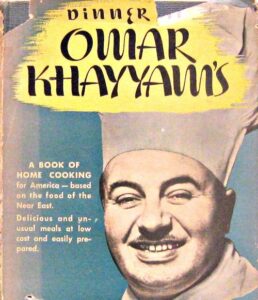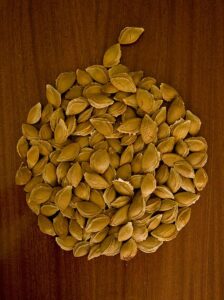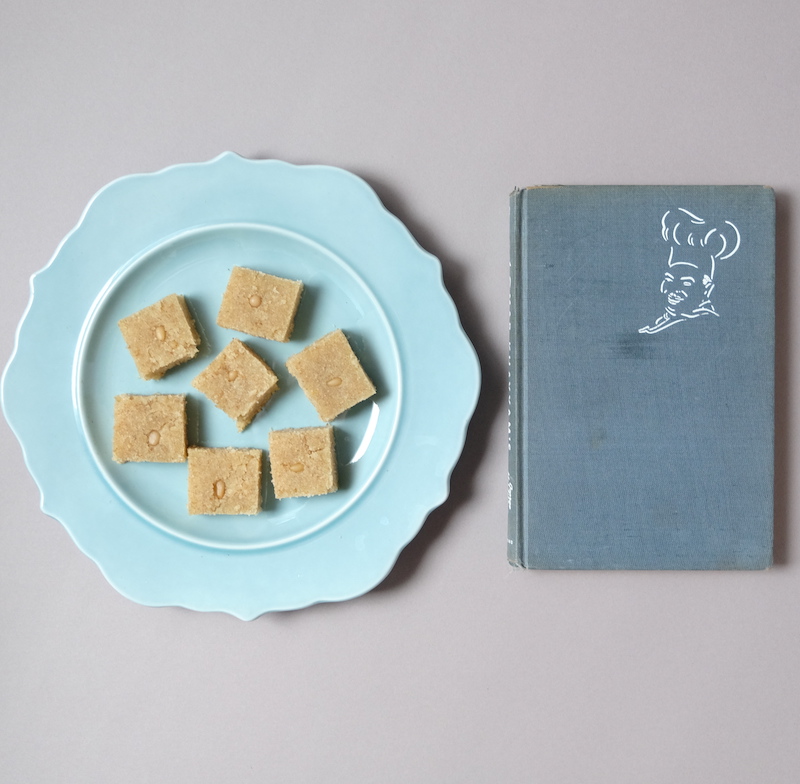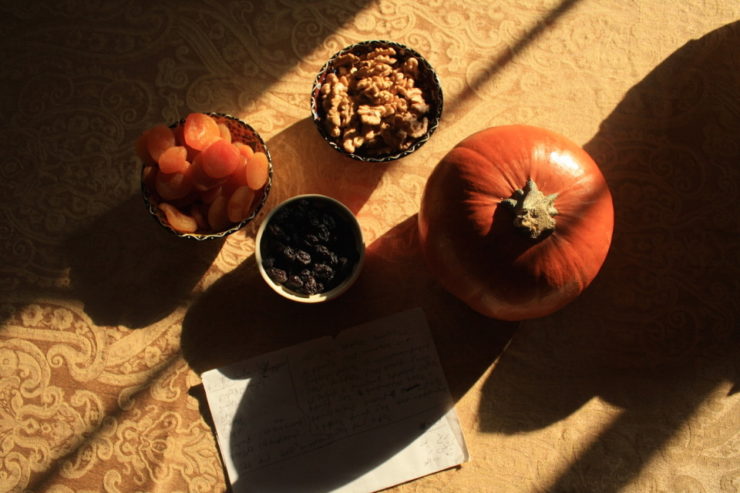Freelance journalist and essayist Liana Aghajanian has hopscotched around the globe, reporting on stories as far apart as the first record store in Mongolia, an Arizona man looking for “the holy grail of botany,” and the Muslim undertakers of East London. A reader who follows her around the map can track how her curiosity leads her not just to stories but to adventures, their far-flung settings a clear part of what draws her. Journalism, Aghajanian writes, is her “excuse to get to know the world.”
"That's what I felt like often is missing from journalism: We fail to show people in complete ways. One reason I felt that this project could be important was that it had so many parallels to things that were going on in the world today."
But since she won a house two years ago through the Write a House program, which offers long-term residencies to writers in rehabilitated Detroit homes, many of Aghajanian’s stories have sprung from neighborhoods closer to her new home base.
More recently, a new project called “Dining in Diaspora” starts even closer to home, uncovering the hidden histories in her own heritage one recipe at a time.
Through the threads that connect kitchen tables across the country, Aghajanian has been telling stories about the Armenian diaspora in America. In 1987, she arrived in Los Angeles with her family as an Armenian refugee from Iran, by way of Greece. The foods she grew up eating now guide her reporting about the others who made them, ate them, remembered them, preserved them. “Dining in Diaspora” uncovers the stories of old traditions in a new country and a new century.
The project is still in its infancy, a self-directed effort that’s as much about sharing the diversity of the Armenian immigrant experience as it is about food. Eventually, Aghajanian says, she hopes it might have the same kind of permanence as the early 20th century cookbooks that preserved recipes as language, religion and even memories of ancestral homes dissipated.
Recently, we spoke by phone about connecting with fellow immigrants, the power of cuisine to help us understand diversity and the challenge of telling food stories that are about more than food, too. We talked about the value of working on projects outside of the career hustle, the journalists who help us fine-tune our own artistic compasses, and the significance of telling stories about immigrants in America right now. Unfortunately, no record remains of that great conversation. (Check your recording devices thrice, everybody.)
Luckily, Aghajanian agreed to chat a second time. That lightly edited conversation follows.
How did this project get started?
I suppose in some ways this project was always something I had thought about doing but never really got around to, for a variety of reasons. There were two major instances that convinced me I had to do it. One of them was my moving to Detroit in February 2016 after I got a fellowship through a program called Write a House. The other one was when I was commissioned to do a piece exploring Armenian food in Los Angeles that was eventually published by Eater and the Museum of Food and Drink in Brooklyn. The reason Detroit had such a big bearing on me doing this project was that I got to know part of the Armenian diaspora specifically in Detroit, whose stories are very different from the environment that I grew up in in L.A., where you have a lot of newer immigration that’s been going on for the last 30, 40 years, and subsequent waves of immigration. The diaspora here in Detroit and on the East Coast and in the Midwest have stories related to America going back over a hundred years, when their families first came because of the genocide in 1915, and even before that. We're talking 1890s, maybe a little earlier for some people.

I knew that there was Armenian immigration to America for a long time, but it wasn't something that I could contextualize, because I really hadn't put myself in that environment to really understand what that meant. The more I met people from Detroit and also places like Wisconsin and Illinois and Boston, places like that, it occurred to me how much they connected with their Armenian identities through food. The language has gone, often the religion has gone, and certain cultural aspects have disappeared, because that's what happens with populations that are forced to migrate somewhere they're not familiar with, but food tends to stay. And I felt like food was such an interesting language of its own, a way to tell stories that are about more than just the food — they had to do with migration, and politics, and identity, and history, and the history of two different people — the Armenian history and the American history — and so it felt like there was just so much going on there that people didn't know about, people didn't realize, and in fact even the Armenian community didn't realize. We didn't know our own history, in a lot of ways, that was tied to this country. It was those two things that did it, but also, I started to understand how complex of a meaning diaspora had. And I think this was a way to explore that complexity in a way that I wasn't really able to do with straight reporting.
As a journalist, especially a freelance journalist without a clear geographic “beat,” the job is usually to tell other people’s stories, often in communities or contexts that are really unfamiliar. Here, you’re telling stories of other people but very related to your own heritage and maybe your own communities. How do you approach that, compared to your usual reporting work? What does it feel like to be a reporter about something so personal?
Obviously, in some ways it feels more comfortable, because it's something that I know. I know the language, I know the foods because I ate them growing up. But in a lot of ways, this project wasn't really that different to me and has been so far like my other journalism, because there was still so much that I didn't know. I approached it in the same way — maybe I knew certain things without someone having to tell me about it, but at the same time it was still in a lot of ways completely new to me. I suppose I've approached it the same way and taken the same kind of steps that I would in any situation like that.
You mentioned last time we talked that one reason you were excited to start this project was that it wasn’t for an editor; there isn’t someone else you’re writing for besides yourself and your readers. Can you tell me more about that choice and how it affects the work?
I wanted to do something that someone didn't have to give me permission to do. I felt like I had reached a point where I wanted to do it on my own. I wanted something that wasn't tied to a deadline, an editor saying, “Yes, you can do this,” an editor giving feedback, getting paid — I didn't want to tie it to anything other than purely the passion for doing it and the belief that I was doing something that could have some beneficial use to other people than myself. Some of that came from a fatigue at the situation that journalists are facing these days, from the current political climate, to cuts ... it came from that. I was just tired of how things were going, and I wanted to do something that was going to remind me why I loved journalism in the first place.
"I felt like food was such an interesting language of its own, a way to tell stories that are about more than just the food — they had to do with migration, and politics, and identity, and history, and the history of two different people — the Armenian history and the American history."
A lot of the conversations about journalism don't talk about it as an art, though many of us get into this job because of the chance to tell stories in a beautiful way, to make some kind of art, strange as that is to admit. What's your sense of that?
I think that journalism is inherently creative work, but it never gets that reputation. I can see that in the way that I've interacted with people over the years — and some of that is because news isn't supposed to be creative — but I think that the kind of journalism that I gravitate towards and that a lot of my colleagues gravitate towards is trying to infuse that creativity in the work we do. It's the truth, but writing about the truth doesn't mean you don’t have to put skill into translating something so someone will actually read your work. Sometimes we talk about those things in terms of narrative nonfiction, or longform, and thank God that that has been something that people like and read. But I feel that there's this perception that the work I do and the work that all of us do is utility. I remember, I think I was in high school or college, and a teacher said something to me that I’ll never forget: The easiest thing in the world to do is to stop reading. I think there is a special creativity and skill that journalists have to make people keep reading a story.
The stories in your project often have beautiful visual elements as part of them, which makes me think about different ways we cultivate that creativity, not only in one medium of choice but through variety. Do you have other artistic practices that you feel feed into your ability to be a journalist in indirect ways?
I can tell you that I come from a family of artists — my dad and my uncle back in Iran were both painters, and when they came to America, that translated into more practical means of employment, so they became graphic designers and lithographers and ran a printing business. So that has always been a part of my life. I suppose maybe subconsciously that could have an effect. I do some of that on my own, but I've never really thought about how that would have an impact on my journalism. … When I think about what motivates me to do journalism, art is definitely a part of it, but I think one thing that can be said about art — the thing that encompasses art is perspective, and I think the certain perspective I have because of my life experiences is what motivates me to keep writing. I might not point to art as being the motivator of that, but I'm sure that's part of it too.
"I wanted something that wasn't tied to a deadline, an editor saying, 'Yes, you can do this,' an editor giving feedback, getting paid — I didn't want to tie it to anything other than purely the passion for doing it and the belief that I was doing something that could have some beneficial use to other people than myself."
None of this is happening in a vacuum — right now is a fraught time in the country, the world, in any slice of reality you want to take. Artists don't work in a vacuum; journalists especially don't work in a vacuum. Can you tell me about how this project fits into the conversations happening about all these things, immigration and diversity and so on?
One of the motivations for me to start this project was that I just felt fatigued about it all. But in the end, I think it's impossible to separate what I'm doing and what motivated me to do it from what's going on in the world today. In a sense, it's still tied.
We have gone down this dangerous path where we're seeing people as one-dimensional when they're not at all; they're even more than three-dimensional. People are such complex creatures, and I think that the political climate has erased that, and it's extremely dangerous. So through this project, I'm hoping that some of that is reflected in what I'm doing — in the sense that we can view people as very complex, to keep using that word, and realize that you can't group people and you can't assign traits to them and have those traits reflected in an entire population of people, whether it's ethnic background, religious background, anything. I think that's the most dangerous thing we could be doing. I hope whoever reads this project can see that complexity reflected through something so universal and simple as food.
That's what I felt like often is missing from journalism: We fail to show people in complete ways. That's for a number of reasons — time constraints, room to write, people's interests, whatever. One reason I felt that this project could be important was that it had so many parallels to things that were going on in the world today. I mean, the Armenian genocide was a hundred years ago, but we're still seeing the same kinds of issues, whether it's the refugee crisis happening on the shores of Europe, or the crisis in Burma right now, or the Syrian civil war — every time I see those things, it takes me back to my own history. The parallels haven't changed. So I felt like this would be a way to relate back to some of the most pressing issues of our time in a different way. To show the effects of that, but also to show that despite these things, populations do have the ability to be resilient.
It seems like there's a platonic ideal of the reporter as omniscient blank slate — but more people are realizing that it's not necessarily the ideal, and definitely not necessary, in order to tell a story well. Your project is a great example of that — your membership in the group is allowing you to share its diversity rather than show it as a monolith. How does your role as an immigrant, as this sort of outsider, still, come up in reporting that you do?

Often, we fail to remember how similar we are, and concentrate on how different we are. And I think if everyone digs deep enough, they will find those stories in their backgrounds. It's just that some of our stories feel more fresh and have more of an impact on current generations and others. But that outsiderness, that feeling of not belonging, of not being rooted — that's always been a common thread in the kind of work that I've done. And I've just realized that. It wasn't something that I knew and specifically chose stories because of that — I only realized it when I looked back on the work that I've done over maybe the last four years, and I thought, OK, I'm sensing this weird theme. I went to Germany to report on Iranian refugees that were coming over to Berlin; I was in Mongolia reporting on the impact of women's health and how the coal industry was impacting nomads who were moving to urban areas; I did a story on black midwives in Los Angeles who were working outside of traditional hospital systems to reduce the rates of infant and maternal mortality. The most recent one was that I went to Minneapolis to do a story about Somali refugees. Those are such different communities from each other. But once you start talking to them, you realize — they have the same story, in a certain way. Or their stories elicit the same kinds of feelings, I suppose, and I feel like maybe through those stories, I'm chasing after my own story.
I think we're thinking about it more often now, but who is reporting the story? What does their perspective and background have to do with how good of a story that's going to be? I know when I've read things from writers about the communities they belong to or maybe have a foot in, it feels more complete in a lot of ways.
Your project is still in pretty early stages. What’s your ambition for it down the line?
My personal hope is that I learn to be a better cook!
I would love for this to eventually to be a more substantial piece of work, something that can live off of the internet. I’m not doing this because I want to write a book about recipes, necessarily, but I hope that the stories feel worthy enough to be part of something bigger. I would love to do workshops where we talk about the history but also do some demonstrations with food.
One of the stories I want to do is about Armenian women's guilds across the country that did preserve these stories, about 20-30 years from the genocide — we're talking about cookbooks published in the ’30s-’50s. They really had a hand in preserving those legacies, and people use those cookbooks still today, though many of the villages the recipes came from don’t exist anymore.
They had the sense to write this stuff down into cookbooks, some of which have stories — so I thought, despite our digital world, that these stories can do more service to people than just existing online.




